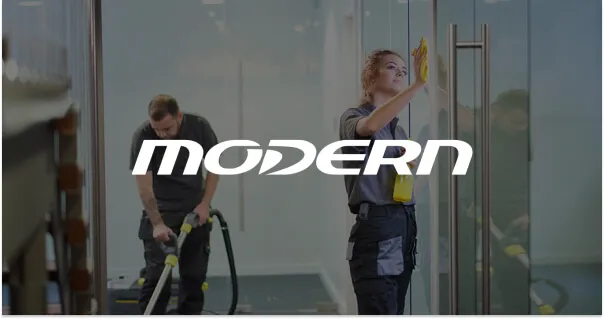
Create AI videos with 230+ avatars in 140+ languages.
Operational excellence (also known as OpEx) is the reason why some businesses rocket past the competition while others are still revving their engines at the starting line.
But what does your executive team really mean when they say they want to "achieve operational excellence"?
Excellence means great performance... constantly. No easy feat.
This business philosophy drives organizations to find iteratively efficient ways of doing things. The result is a happy customer, workforce, and bottom line — simply put, business success.
Joseph F. Paris Jr., founder of the Operational Excellence Society, says, "When implemented well, OpEx creates an environment where leadership and employees collaborate to improve operations [...] A collaborative approach drives value for customers and anticipates and resolves issues pre-emptively."
Let's show you some examples of operational excellence and how other businesses use it.
Example 1: Continuous improvement
Toyota's Kaizen approach is one of the most popular operational excellence examples. It involves employees at all levels working together to achieve regular, incremental improvements in the manufacturing process.
The term "Kaizen" in Japanese means "change for the better" or "continuous improvement." This philosophy focuses on continually improving processes in manufacturing, engineering, business management, and other areas to boost operational performance.
Kaizen is literally applied every day in Toyota's factories. With every employee tasked to produce Kaizen inspired optimizations, it's operational excellence is inevitable. Here's a short clip that shows it in practice:
Example 2: Focus on process
Intel implements a rigorous process-oriented approach in its chip manufacturing. The company combines standardized processes with Six Sigma and significantly improves operational excellence. Basically, it systematically optimizes each step to enhance efficiency, reduce waste, and ensure consistent quality outcomes.

Check out this behind-the-scenes tour at one of Intel's factories in the U.S:
Example 3: Cost reduction
By using Synthesia, an AI video maker, Modern Canada dramatically reduces the costs of producing training and operational videos from thousands of dollars per video to significantly less.
According to this case study, the company generated 100 videos in six months, 90% faster, while saving +$6,000 per video.
How companies can cut down costs using operational excellence examples like this one:
- Implement automation and AI tools to streamline processes and reduce labor costs.
- Outsource functions like IT support, human resources, and payroll.
- Regularly review and negotiate supplier contracts to secure better pricing or terms.
- Shrink utility costs with energy-efficient workplace technologies and practices.
- Support remote work wherever possible.
Example 4: Customer satisfaction ratings
Amazon is at the top of the list in this category of operational excellence examples. The giant retailer tracks customer feedback and satisfaction through its star rating system and detailed customer reviews. This system influences product offerings and seller standards by forcing sellers to constantly enhance their business processes, improve customer fulfillment, and drive overall operational excellence.
Here's how you can make the most of customer satisfaction ratings at your company:
- Incorporate real-time feedback on services and products.
- Use feedback to make immediate adjustments to operations.
- Identify specific areas or demographics where satisfaction is low.
- Tailor operational improvements for the segments that show low satisfaction.
- Set clear metrics that connect customer happiness ratings to individual and team performance goals.
- Promote a culture of customer-centric operational excellence.
Example 5: Lean manufacturing
With a smooth "just-in-time" (JIT) inventory system Dell minimizes stock levels and reduces waste while ensuring components are available for assembly exactly when needed. This system directly serves lean manufacturing, allowing the company to create more value for customers with fewer resources because:
- It keeps only the necessary materials on hand, reducing storage costs and increasing operational excellence.
- Goods arrive just when needed, making the production process quicker and more flexible.
- Less money is locked up in unused inventory, allowing funds to be used for other business needs.
- Any issues with inventory need to be fixed immediately to avoid slowing down production, leading to ongoing improvements in product quality.
Example 6: Create value for customers
This is one of the unique examples of operational excellence because it involves creating value for customers by first obsessing over employee training.
While taking great care of its employees, Heineken adds value to the end user and ensures better service and product quality. Its continuous improvement efforts led the company to use AI to scale training video production. This shift allowed it to make employee resources more engaging and accessible.
Since using AI to achieve operational excellence, Heineken has trained 70,000 employees in multiple languages in supply chain processes. Here's how they did it and what their Global TPM Manager of Customer Service and Logistics says about it:
Example 7: Agility
Netflix has rapidly adapted to changes in consumer behavior, from DVD rentals to streaming services. It continuously evolves its content offerings using real-time data to match what worldwide viewers want.
This service powered by analytics keeps content interesting and audiences engaged. Netflix digitized its interactions with 151 million subscribers, and algorithmic recommendations trigger 80% of the content these people watch. The result is a retention rate enhanced by 79%.
Example 8: Customer focus
As a "customer-obsessed company that focuses on delivering a WOW experience," Zappos empowers its customer service reps to go to great lengths to satisfy customers. Their dedication to operational excellence principles allowed the company to grow a loyal customer base through exceptional service. Now, the entire internet talks about Zappos "going to extremes for customers."
To truly satisfy its customers, Zappos first pleases its customer service reps. While most call centers have a 30-45% turnover rate, at Zappos, it's only 18-20%. These stats show that the company retains 10-25% more employees than the average call center.
Example 9: Learning
As a global leader in science and innovation, DuPont creates in-house training videos for its Operational Excellence Program. The company is committed to continual learning and skill development across its international workforce.
DuPont turned to AI videos to scale training production more effectively. This decision allowed it to create video learning resources 80% faster and with +$10,000 savings per video compared to third-party vendors.
Example 10: Science
The science-based technology company 3M encourages its researchers to spend 15% of their time on projects of their choice. This approach fosters innovation and has led to the development of Post-it Notes, a product now available in any stationary store worldwide. The company's innovation mindset made it to the Harvard Business Review publication.
Example 11: Create comprehensive transparency
Patagonia offers complete transparency about its supply chain and the environmental impact of its products, building trust and loyalty. As proof, Patagonia's brand awareness is at 57% in the U.S., and 79% of its customers are loyal to the brand.
The company has a solid Supply Chain Environmental Responsibility Program and focuses on material traceability to map out all the entities in its supply chain. This level of transparency is a powerful operational excellence strategy example.
Example 12: Standardization
The Canadian international real estate investment trust Northwest Healthcare Properties has a special approach to using video for training. By creating consistent, scalable, and easily updated training content with AI, it ensures a standardized learning experience across the organization. This standardization drives business processes and is critical during transformative changes.
Example 13: Decision-making
There's no list of operational excellence examples that won't include Google! The tech giant uses data-driven decision-making processes and operational excellence tools to inform its product development, ensuring decisions rely on data analysis and metrics.
By examining a lot of information and numbers to make smart choices about new products, Google can be more sure that its products will be useful and that people will like them.
Example 14: Respect every individual
The SAS Institute maintains high employee satisfaction by respecting personal work-life balance and providing a supportive work environment. The entire organization lives and breathes by the principle that "satisfied employees mean satisfied customers." By taking care of its most important asset, the employees, the Institute achieves organizational excellence much more easily.
Example 15: Empower employees
At Southwest Airlines, employees can make in-the-moment decisions that enhance customer service. Empowering the staff creates a sense of ownership. They feel responsible and take the initiative to solve problems creatively. Plus, happy staff means happy customers—when the team feels free to personalize their approach, they can deliver above-average service.
Forbes called Southwest Airlines "the world's most profitable airline ever." You can read its story here.
Example 16: Seek perfection
The story of the late Steve Jobs spending 30 minutes debating the shade of grey that Apple should use for the in-store bathroom signs is internet-famous.
The company prioritizes designing beautiful and functional products even today, believing this sparks user creativity. This commitment to aesthetics and high performance drives their continuous pursuit of innovation, pushing them to create even better products.
Example 17: Assure quality at the source
L. L. Bean ensures quality from the start of the manufacturing process. It implements strict operational excellence methodologies to minimize defects and customer returns. This approach helps maintain its reputation for high-quality products that customers trust and rely on.
Example 18: Leadership
Following Satya Nadella's vision, Microsoft emphasizes a growth mindset. Leaders at all levels are encouraged to see challenges as opportunities to learn and grow. This mindset excites everyone to learn new skills and contribute to the company's success. It's a win-win — employees feel empowered, and Microsoft keeps innovating.
Example 19: Think systematically
IKEA systematically designs its operations, from product design to in-store customer experience and follow-up services. This ensures ongoing process improvement, efficiency, and a unified process flow throughout the production cycle and customer journey. Moreover, this way of thinking at every business step helps eliminate unnecessary procedures.
Example 20: Employee feedback
The #1 AI CRM, Salesforce, regularly solicits employee feedback through internal platforms and town hall meetings. The company uses this feedback to influence its policies and culture. That's how its workplace meets employees' needs and goals, creating a friendly and welcoming environment that encourages new ideas and growth.
Example 22: Lead
Indra Nooyi, former CEO of PepsiCo, led the company to pivot towards healthier products in response to changing consumer tastes and health trends. This leadership move helped PepsiCo stay relevant and competitive as more people began choosing healthier options.
Example 23: Create repeatable processes
FedEx has optimized repeatable package routing and delivery processes, ensuring fast, reliable service worldwide. Their consistently efficient processes for package delivery pay off in high client satisfaction worldwide. In 2023, the company won the "Logistics Provider of the Year" award.
Example 24: Commitment to quality
When you say Rolex, you say quality. The company adheres to stringent aesthetic guidelines and quality control processes in manufacturing watches, ensuring its reputation for reliability and excellence. That's why they've been around for over 100 years (since 1905!). It takes a whole year to make one Rolex, and they say you can recognize it from 20 feet away:
Example 25: Establish key performance indicators (KPIs)
Coca-Cola uses KPIs to measure everything from sales performance to environmental impact, helping to align its operations with strategic goals. Thanks to these thorough and specific KPIs, all parts of the company work effectively towards common objectives, promoting efficiency and accountability across the organization.
Power your operational excellence with AI videos
Imagine replacing lengthy emails and yawn-inducing manuals with engaging, crystal-clear videos that even the busiest bee on your team can understand in a snap.
Yes, videos help you streamline operations, enhance training, and communicate complex processes with incredible ease.
And no, they don't have to blow your budget. On the contrary! Creating AI videos can save you money, time, and even personnel, replacing traditional crew-led video production. It's so easy you can do it yourself in hours instead of days or weeks.
Use this free AI video generator and see what it's like to turn text into video in minutes!
About the author
Strategic Advisor
Kevin Alster
Kevin Alster heads up the learning team at Synthesia. He is focused on building Synthesia Academy and helping people figure out how to use generative AI videos in enterprise. His journey in the tech industry is driven by a decade-long experience in the education sector and various roles where he uses emerging technology to augment communication and creativity through video. He has been developing enterprise and branded learning solutions in organizations such as General Assembly, The School of The New York Times, and Sotheby's Institute of Art.
















